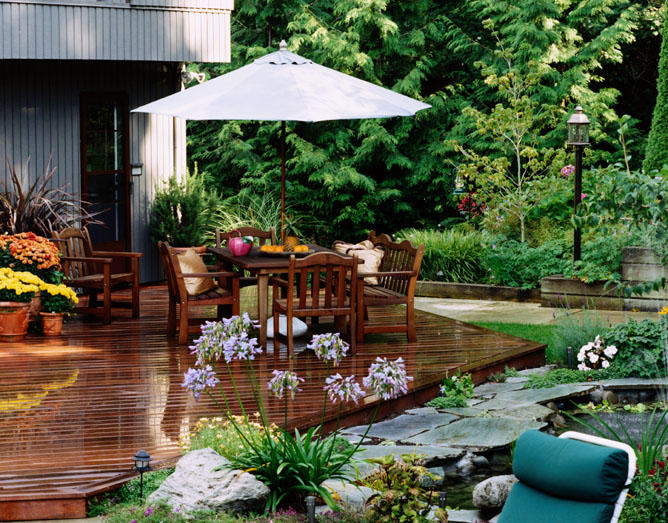Cool Roofing Deflects Additional Costs
See if We Have Top-Rated
Roofing Contractors in Your Area

During the summer, your roof takes on some heavy burdens. Since traditional roofs are typically constructed of dark, absorbent materials, they soak up a lot of energy from the sun. This, in turn, heats up your whole house and makes your air conditioning run all hours of the day. Many commercial buildings have remedied this problem by installing cool roofing, a surface that consists of highly reflective materials that deflect the sun's solar energy. This material reduces the heat absorbed and can cut the roof temperature by 50-70 degrees. But recently this alternative has caught the eye of many homeowners as well and is now available for residential housing.
Cool Roofing Qualities
Interior Comfort: As mentioned before, by allowing your roof to take on less solar energy, less heat will be transferred inside the home, which cools your attic and duct system, creating smaller utility bills.
Exterior Relief: When conventional roofs retain all that solar heat, it can build up and increase the temperature of your entire neighborhood. This is especially true in overcrowded cities, where urban heat islands can be created. When this occurs, more utility power has to then be expended in order to balance the temperature, creating air pollution and energy burdens. Cool roofing is an easy, passive way to alleviate the problem.
Long-Lasting: Over time the sun can damage any roof. By deflecting the rays, your roof will deteriorate slower, cutting down on maintenance and replacement costs. Plus, the most effective cool roofing materials are already at the top-of-the-line for life expectancy.
Retrofit: This energy-efficient surface can fit over any pre-existing surface. It can be installed on any roof, despite the slope or pitch, and it can be reapplied at any time, which saves you the expense and hassle of wasteful demolition work.
Affordable: It costs the same as traditional roofing. Plus, due to its ecological advantages, you could get tax breaks or other financial incentives from the government.
Types of Cool Roofing Systems
Membranes: A pre-fabricated, laminated membrane can be applied over a roof. Constructed of many materials, these coverings are usually flexible, waterproof, come in a variety of shades, and can even be made to replicate the look of conventional shingles.
Coatings: Like a thick paint, a special coating can be sprayed or rolled onto a surface. To remain visually pleasing, it comes in a variety of colors, including white and metallic.
Shingles: Some clay, asphalt, or concrete tiles contain special pigments that help to reduce the sun's harmful UV rays. They avoid heat absorption, but to help with solar reflectance you should choose light-colored shingles.
Looking to cool down your home? Use this link for
Cool Roofing Projects
Cool Metal Roofing
Recently, cool metal roofing has become obtainable. Unlike traditional metal roofs, these new products are coated with a pigment to help reflect the sun's heat. Plus, they are installed to work with other roofing systems (ventilation and insulation), and they hardly touch the original underlying substrate of the house, which means less transference of energy. In fact, in terms of cool roofing, only white concrete tile has a higher solar reflectance rating. Cool metal roofing is also maintenance-free, has a longer life cycle than most roofs, and is often constructed from recycled materials.
Warm Roofing for Cold Climates
Although it may not have the same dramatic effect, in colder climates it's a good idea to install a dark-colored roof that is able to absorb as much of the sun's heat as possible. But, like its more well-known counterpart, warm roofing is its own roofing system. The telltale characteristic of a warm roof is the location of the roof's insulation. Warm roofing places the insulation on the roof deck, just below the waterproofing layer, as opposed to a conventional roof where the insulation is located in the sub-roofing layers. The result is better insulating performance. Some roofing systems take this a step further and move the insulation on top of waterproofing layers. This is known as an inverted roof. However, when a leak occurs, repairs can be costly as multiple roofing layers will need to be replaced.

